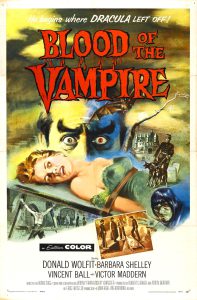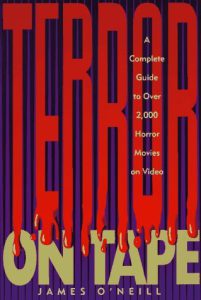My back has been acting up lately. I don’t know why. I recently lost 15-20 pounds so, if anything, my back should feel better not carrying that extra weight around. But then again, I’m no stranger to chronic aches and pains. My neck, my jaw, and my upper back are often stiff and sore at the end of the day. I’ve even been known to experience inexplicable pain in my left arm (which one can’t help but recognize as a possible symptom of a heart attack). The first time I experienced the arm pain, I went to see a doctor at a walk in clinic.
“Hold your arm like this,” he said to me, placing it in an upright, fist waving sort of pose. He then took hold of it and pulled it toward him. I offered no resistance, so my arm immediately folded over into a straight line.
“No, no, no,” he said. “Don’t let me pull it.”
Oh. Okay. I curled my arm upward until my fist pointed at the ceiling and tightened the muscles as if I was holding onto someone who was dangling off the edge of a cliff. The doctor grabbed my arm with both hands and tried to pull it toward him. He threw all of his body weight into it, and suddenly he was Lou Costello and I was Buddy Baer, or Frankenstein’s monster, or some other immovable person, and Abbott was shouting from offstage “Are you gonna let him get away with that?!”
I should perhaps mention that my Dad introduced me to weightlifting when I was young, and twenty some years later I was still using his old dumbbells to do two or three exercises a day. Hardly a serious training program, but it was a way of adding a little bit of activity to my long hours spent sitting still at a desk.
My arm didn’t budge, and the doctor let go, out of breath. “Well, there’s nothing wrong with that arm,” he laughed. Then he got a little more serious. “The only other thing it could be, is your heart,” he told me. “You seem a little too young for that, but we might as well do a test.”
So, the doctor hooked me up to an E.K.G. and tested my heart. When it was over, he approached with a handful of paper. “To me, ” he said “this looks perfectly normal. But I’ll send it to a cardiologist just to be sure. If there’s a problem, we’ll give you a call.”
They didn’t call. But did that really mean I was okay? Or were they just taking their time get ting back to me?
When my arm flared up again a year later, I went back and saw a second doctor. He was able to confirm that there was nothing wrong with my heart. HIs theory was that a tight neck muscle was pinching a nerve which was referring pain to my arm. “It’s probably caused by something simple, like that way you sit at your desk,” he suggested.
This was years ago, and since then I’ve seen a couple of physiotherapists who have given me exercises to deal with various chronic injuries. I’ve also tried to sit in a better way, in a better chair, etc. and I’ve even made myself a standing desk so I can work while standing up. Unfortunately, standing all the time causes other problems, with my feel, knees, etc. So, I try to mix things up on most days.
A couple of years ago, I was given an opportunity to write scripts for a half hour true crime television series. The only catch was I had to write one script on spec, as a kind of audition. If they liked it, they’d pay me for it, use it, and then hire me to write a whole bunch more. I only had a few days to write this demo script, and because it was my “audition”, I wanted to make it as good as I could. So I sat in my desk a lot, writing. I think I sat there for about 18 hours on the last day, not moving until the script was done.
The good news is that the producers loved it. While I waited for them to send me a contract and a bunch of other paperwork, I started my daily routine of stretching and exercising. I had been doing it for over two months, and I was feeling much better. I had lost close to 20 pounds, and I had not been in pain for weeks.
And then, as I was in the midst of one of the most basic stretches, my back suddenly screamed at me. I could barely get up off of the floor. Once I was standing up straight I felt okay, but trying to get and in and out of a chair was murder. And I had several pieces of paper to print out, sign, scan and send back to the TV producers. I wound up awkwardly signing them against a wall.
To make this ridiculously long story a tiny bit shorter, the back pain stuck around for a few days and then disappeared.
Now, three years later, it’s mysteriously returned . And just like last time, I’ve been exercising and stretching more – and I’ve recently lost weight! So, apparently those things are bad for you…
It’s true that, like last time, I’ve also been spending more time sitting at my desk. Perhaps this could be at the root of my problems. But on the other hand, it could be something more sinister…
In Burn, Witch, Burn AKA Night of the Eagle (1962), a college professor, who seems to have all the luck, discovers that his wife is a witch, and that she has been protecting him from the evil forces that could destroy his life and/or career. He is, of course, a non- believer, and forces his wife to stop with all her silly, superstitious mumbo jumbo. Unfortunately for him, this is when everything in his life starts to go wrong. Is witchcraft real? The professor, and the viewer, will have to decide before the end of the movie.
I had never seen Burn, Witch, Burn before last friday. It’s a British horror film, not dissimilar to something Hammer might have done. Perhaps a closer comparison could be made to Curse of the Demon (1957), or Horror Hotel AKA The City of the Dead (1960), or even Rosemary’s Baby (1968), in which a husband’s career may be affected by supernatural forces.
So, perhaps if my inamorata had placed the right charms around our home, my back pain would have never returned, and my last play would have been a smash success…
Who am I kidding? That kind of thing only happened in the 1960s.
In any case, I liked Burn, Witch, Burn very much. I knew right away that I was in horror heaven, when a voice boomed out at me with this warning/disclaimer: “Ladies and gentlemen, the motion picture you are about to see contains an evil spell, as used by practitioners of witchcraft for centuries… ” I believe that this was actually added by the American distributor, American International Pictures, but it loved it.
Burn, Witch, Burn AKA Night of the Eagle (1962) made for a perfect #FridayNightAtTheHomeDriveIn. Fans of atmospheric, intelligent, black and white, British supernatural horror films (or any portion thereof), should definitely seek this one out. I know I am delighted to have it in my #NotQuiteClassicCinema library, and I will be enjoying it again sometime in the not too distant future.
 Blood of the Vampire (1958) by #HenryCass
Blood of the Vampire (1958) by #HenryCass



